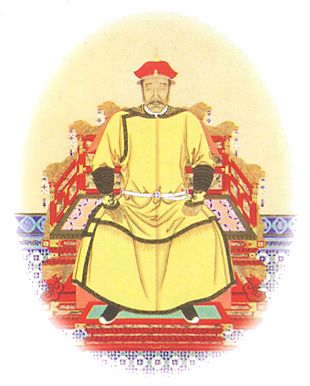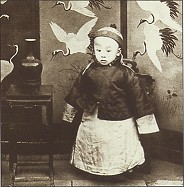

1.0 Introduction
Most people are familiar with
the end in 1911 of China's last feudal rule, the Qing Dynasty. Well known to
easterners, the last Qing emperor, Pu Yi (right), was immortalized to
westerners in the movie "The Last Emperor". He was but the last glow from
the dying embers of a dynastic empire which had lasted for well over 250
years.
So how did this Qing ("pure") dynasty come to be? Was it a result of a popular, peasant rebellion like its predecessor, the Ming dynasty? Or an opportunistic war monger who grabbed a chance to steal the throne by force?
The Qing dynasty is officially counted from June 1644, when the Manchurian army leader Dhorgon from the Forbidden City in Beijing issued an edict declaring the inauguration in China of the dynasty. To ingratiate itself with the Han Chinese, the Qing alleged that it was merely avenging the overthrow earlier that year of the Ming dynasty on behalf of the Ming subjects (!).
But it wasn't that simple. -And it wasn't even true...
In fact, the Qing dynasty wasn't even formed in 1644. When Dhorgon stood in Beijing and demanded loyalty to the new dynasty by all the Han Chinese subjects, it had already formally been around for 8 years -far more if you count canonization.
And the Qing were none other than the descendants of the Jurchen Jin who had already ruled northern China in the 12th century.

They were back in power in Han China under a new name and in new clothes.
These few pages will trace how the Jin managed to return and regain control of Han China south of the Great Wall.
The story may start with Jin Zhongdu and include famous characters like Djenghis Khan, but in the end analysis, it was very much down to the accomplishments of the gentleman (top left) staring so menacing at you. His name is Nu'erhachi (1559-1626), also known under his posthumous reign name: Taizu. And like Pu Yi ended it, Nu'erhachi started it all......